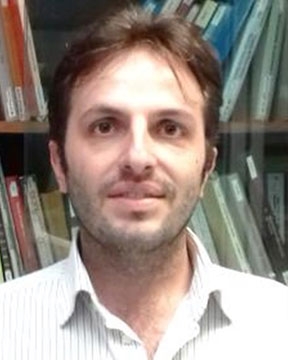Abstract:
The mechanics of porous media is among the most fascinating and interesting branches of continuum mechanics since it can be applied to extremely broad fields of science. From the beginning of the XX century, when Karl von Terzaghi postulated the effective stress principle in soils mechanics, the theory of porous media advanced substantially, particularly thanks to the contribution of Maurice Anthony Biot. He introduced the general concept of the poroelastic medium and developed the theory of dynamic poroelasticity (now known as Biot’s theory) which is the basis of porous media mechanics. More recent developments consider averaging procedures which also include interface mechanics [1].
Porous media mechanics is ordinarily used for geomechanical problems at large, but nowadays it is also applied to model biomechanical ones. Teeth and bone decalcification, herniation of intervertebral discs and glaucoma and tumor growth are examples of clinical pathologies which can be modeled using mathematical approaches based on porous media mechanics.
Two very different applications are briefly presented to highlight the flexibility of this theory.
The first one is a thermo-hygro-chemo-mechanical (THCM) model for concrete. The presented approach is inspired by the theoretical framework of Gawin, Pesavento and Schrefler [2]; the reference model has been further improved for structural application by accounting for shrinkage, as well as creep and mechanical damage in a fully coupled fashion.
The second one is a multiphase model of tumor growth. The tumor is modeled as a four-phase system which consists of a solid phase, an extracellular matrix, and three fluid phases. The fluid phases are the interstitial fluid, tumor cells and healthy cells, with the latter two phases modeled as adhesive fluids. Since tumor growth is strongly influenced by nutrient availability, the diffusion of oxygen coming from the nearby existing vessels is also considered. Examples of biological interest will be presented.
References:[1] Gray, W.G. and Miller C.T., "Thermodynamically constrained averaging theory approach for modeling flow and transport phenomena in porous medium systems: 1. Motivation and overview" Advances in Water Resources 28 161–180 (2005).
[2] Gawin, D., Pesavento, F. and Schrefler B.A. "Hygro-thermo-chemo-mechanical modelling of concrete at early ages and beyond. Part I: Hydration and hygro-thermal phenomena", International Journal for Numerical Method in Engineering, 67(3), 299-331 (2006).
|




















